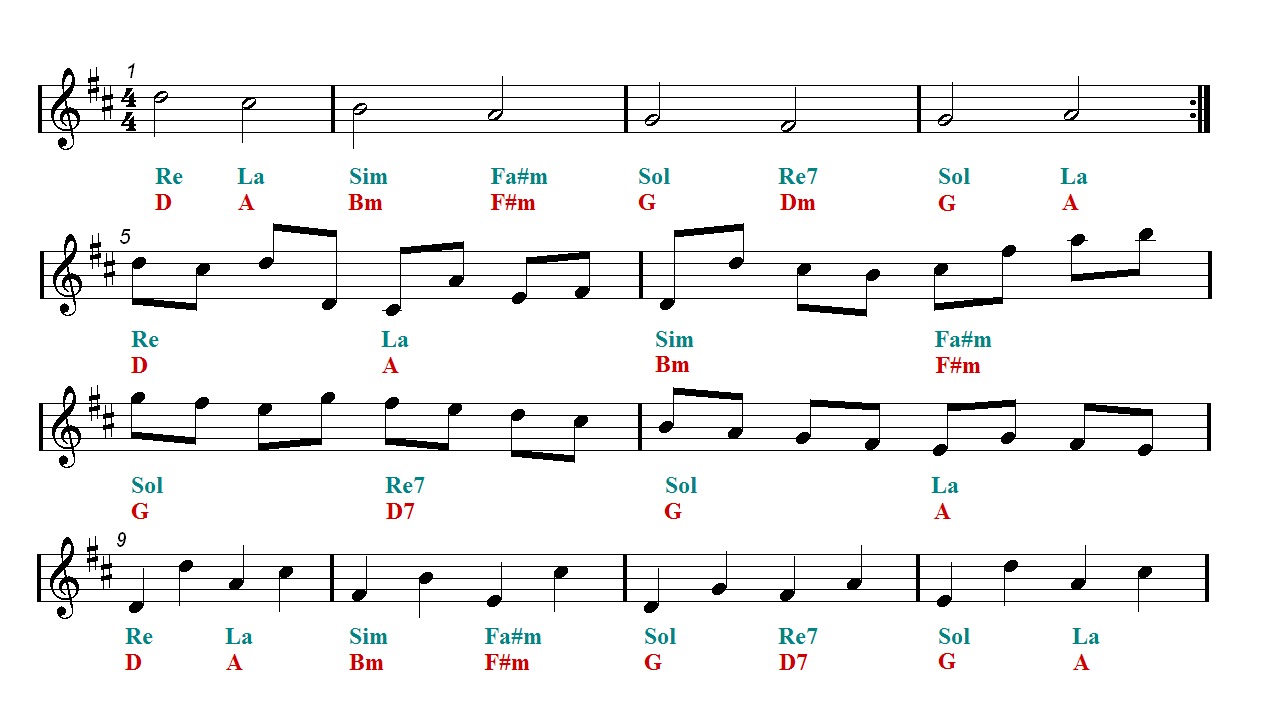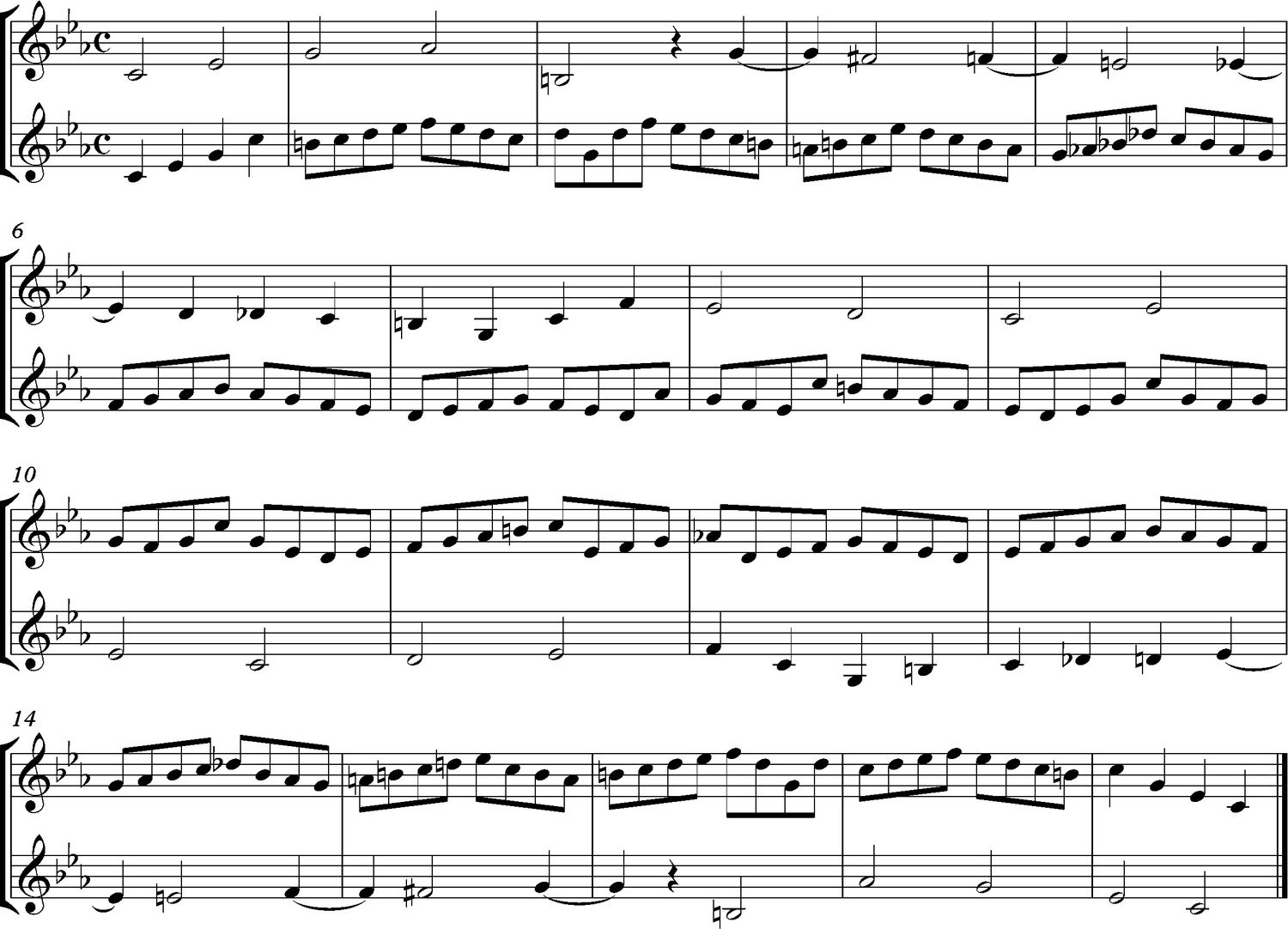Home>Production & Technology>Music Theory>Music Theory What Characterizes The Blues


Music Theory
Music Theory What Characterizes The Blues
Published: January 31, 2024
Learn the essential elements of music theory that define the blues genre. Explore chord progressions, scales, and improvisation techniques in this comprehensive guide to music theory.
(Many of the links in this article redirect to a specific reviewed product. Your purchase of these products through affiliate links helps to generate commission for AudioLover.com, at no extra cost. Learn more)
Table of Contents
Introduction
The blues is a genre of music that has deep roots in African American culture and has significantly influenced the development of various music genres, including rock, jazz, and R&B. It is characterized by its distinct chord progressions, soulful melodies, and emotive lyrics that reflect the struggles and experiences of its performers.
The origins of the blues can be traced back to the late 19th century in the southern United States, particularly in African American communities. It emerged as a form of expression for those who were enslaved or oppressed, serving as a way to convey their emotions and experiences.
One of the defining features of the blues is its unique musical structure. It typically follows a 12-bar pattern, which provides a framework for improvisation and allows musicians to express their individuality and creativity. The blues also incorporates specific scales, such as the blues scale, which consists of the root, flattened third, fourth, flattened fifth, fifth, and flattened seventh notes of the major scale.
Blues music is characterized by its soulful and raw sound. It often features call and response patterns, where the lyrics of the singer are echoed by an instrument, such as a guitar or harmonica. The rhythm is typically syncopated, with emphasis on the offbeats, giving the music a distinctive swing and groove.
Improvisation is a crucial element of blues music. Musicians are encouraged to express themselves through their playing, adding their own unique style and interpretation to the music. This improvisational aspect allows for a wide range of emotions to be conveyed, from deep sadness to joy and celebration.
Over the years, the influence of the blues has spread far beyond its original roots. It has become a foundation for many other genres, including rock and roll, jazz, and even contemporary pop music. The raw emotion and expressive nature of the blues have resonated with artists from all backgrounds, leading to its integration and evolution into various musical styles.
In this article, we will delve deeper into the origins and characteristics of the blues, exploring its structure, scales, chord progressions, and rhythm. We will also examine the importance of improvisation in the blues and its enduring influence on other genres. Join us on this journey through the rich and soulful world of blues music.
Origins of the Blues
The blues can be traced back to the late 19th century and has its roots in African American history and culture. It evolved from a combination of African musical traditions, field hollers, spirituals, and work songs. The blues emerged as a form of expression for African Americans, particularly those who were enslaved or facing racial discrimination.
During slavery, African Americans were stripped of their freedom and faced unimaginable hardships. Music served as an outlet for them to express their sorrows, hopes, and aspirations. The early forms of the blues were often improvised, with lyrics reflecting the struggles and despair faced by African Americans. These early blues songs were performed a capella or accompanied by simple instruments such as the acoustic guitar or harmonica.
As African Americans moved from the rural south to the urban cities during the Great Migration, the blues began to evolve. The influence of other music styles, including ragtime and jazz, started to shape the sound of the blues. This led to the emergence of classic blues artists such as Bessie Smith, Ma Rainey, and Mamie Smith, who gained popularity in the 1920s.
The blues became a powerful form of expression, allowing African Americans to share their personal experiences and emotions. It was a way for them to tell their stories and connect with others who could relate to their struggles. The melancholic lyrics and soulful melodies of the blues resonated with listeners, regardless of their background, creating a profound emotional connection.
It is important to acknowledge the significant impact of African American musicians in shaping the blues. Artists such as Robert Johnson, Muddy Waters, and B.B. King paved the way for future generations of blues musicians, leaving an indelible mark on the genre. Their influential guitar playing techniques, powerful vocals, and heartfelt lyrics continue to inspire musicians to this day.
While the blues initially thrived within the African American community, its popularity eventually crossed racial and cultural boundaries. It became a part of American popular music and influenced the development of various genres, from rock and roll to rhythm and blues.
The origins of the blues are deeply rooted in the history and experiences of African Americans. It serves as a testament to the resilience and creativity of a marginalized community, and its enduring legacy continues to captivate audiences around the world.
Structure of the Blues
The structure of the blues is a fundamental element that gives the genre its recognizable sound and feel. It follows a distinctive pattern known as the 12-bar blues, which serves as a framework for the melody, chord progression, and improvisation.
The 12-bar blues is comprised of three sections, each lasting for four bars. The structure is typically represented as follows:
1. The first four bars are known as the “one” or the tonic. This section establishes the key of the song and often repeats a single chord.
2. The next four bars, known as the “four” or the subdominant, introduce a new chord that adds tension and creates anticipation.
3. The final four bars, known as the “five” or the dominant, resolve the tension and bring a sense of completion to the progression.
Within these sections, variations in chords, melodies, and rhythms can occur to add depth and interest to the music. While the traditional 12-bar blues structure is the most common, it is not uncommon to find variations, such as 16-bar or 8-bar blues progressions.
Another important aspect of the blues structure is its use of repeating musical phrases. Often referred to as “call and response,” this technique involves the interaction between an instrument, usually a guitar or harmonica, and the vocals. The call and response pattern is a key characteristic of the blues and adds a dynamic and engaging element to the music.
It is worth noting that the structure of the blues allows for improvisation and individual expression. Musicians have the freedom to improvise within the established chord progression, adding their own creativity and style to the music. This improvisational aspect is one of the reasons why the blues has remained a vibrant and evolving genre.
Overall, the structure of the blues provides a solid foundation for musicians to build upon. It offers a framework for storytelling, emotional expression, and musical exploration. This fundamental structure, combined with the unique scales, rhythmic patterns, and improvisation, contributes to the timeless appeal and allure of the blues.
Blues Scale
The blues scale is a crucial component of blues music and is integral to capturing the distinct tonality and emotion of the genre. It is a specific scale that incorporates both major and minor elements, creating a unique and expressive sound.
The blues scale is typically based on the pentatonic scale, which consists of five notes per octave. However, the addition of one additional note, known as the “blue note,” gives the scale its characteristic bluesy sound. This added note is often a flattened third, resulting in a unique tension and melancholic quality.
The typical blues scale includes the root, flattened third, fourth, flattened fifth, fifth, and flattened seventh notes of the major scale. For example, in the key of C, the notes would be C, Eb, F, Gb, G, and Bb.
What makes the blues scale versatile is that it can be used over various chords within the blues progression. This flexibility allows musicians to create melodic lines and solos that reflect the changing harmonies of the song.
The blues scale is particularly well-suited for improvisation, as its structure allows for expressive and emotive playing. Musicians can bend or slide notes, add vibrato, and use other techniques to further enhance the bluesy feel of their performance.
Furthermore, the blues scale has influenced other genres of music, including rock, jazz, and even pop. Its distinct tonality and ability to evoke powerful emotions have made it a favorite among both musicians and listeners alike.
It is important to note that while the blues scale is a fundamental element of blues music, it is by no means the only scale used within the genre. Musicians often blend the blues scale with other scales, such as the mixolydian scale or the dorian scale, to add variety and complexity to their playing.
Whether used as a foundation for improvisation or as a melodic framework for songwriting, the blues scale remains a defining characteristic of blues music. Its unique combination of major and minor elements and the inclusion of the blue note create a sound that is instantly recognizable and deeply evocative.
12-Bar Blues Progression
The 12-bar blues progression is a fundamental framework that underpins countless blues songs. It provides a structure for the chord progression and serves as a foundation for improvisation and songwriting in the blues genre.
The 12-bar blues progression is typically divided into three sections, each lasting for four measures or bars. The basic chord structure follows a specific pattern:
- The first four bars start with the tonic (I) chord, establishing the key of the song. This is often a dominant seventh chord.
- The next two bars transition to the subdominant (IV) chord, adding a sense of tension and anticipation.
- The following two bars return to the tonic (I) chord, releasing the tension and providing a resolution.
- The final two bars conclude with the dominant (V) chord, creating a sense of finality and preparing for the next repetition of the progression.
Typically, the 12-bar blues progression is repeated several times throughout a song. This repetition allows musicians to explore different variations, add instrumental solos, and build dynamics and intensity.
While the basic structure of the 12-bar blues progression remains consistent, there are variations that exist. These variations may include adding additional chords or altering the order of the chords within the progression.
One of the reasons why the 12-bar blues progression is so enduring is its simplicity and flexibility. It provides a solid foundation for musicians to build upon and allows for creative expression. Musicians can experiment with different voicings and inversions of the chords, incorporate passing chords, or add chromaticism to add complexity and personalize their interpretation of the progression.
Additionally, the 12-bar blues progression serves as a canvas for improvisation. Musicians can create melodic lines and solos using the blues scale and explore different techniques such as bending notes, slides, and expressive phrasing. The repetitive nature of the progression allows musicians to develop their improvisational skills and develop their unique voice within the blues genre.
Overall, the 12-bar blues progression is a cornerstone of blues music. Its simplicity, versatility, and potential for creativity make it a powerful tool for musicians to express emotions, tell stories, and connect with audiences. Whether performed by a soloist or a full band, the 12-bar blues progression is a testament to the enduring appeal and timeless nature of this genre.
Blues Chords
Blues music is characterized by its distinct chord progression, which creates the foundation for the genre’s signature sound. While there are variations and substitutions, there are a few primary chords commonly used in the blues.
The three main chords in the blues are the tonic (I), subdominant (IV), and dominant (V) chords. In the key of C, these chords would be C, F, and G, respectively. These chords form the backbone of the 12-bar blues progression and provide the harmonic structure for blues songs.
The tonic (I) chord, often referred to as the “home” chord, establishes the key of the song. It is typically a dominant seventh chord, combining the root, third, fifth, and flattened seventh notes of the scale. For example, in the key of C, the C7 chord would contain the notes C, E, G, and Bb. This chord is typically played in the first four bars of the 12-bar blues progression.
The subdominant (IV) chord adds contrast and tension to the progression. In the key of C, the F7 chord is commonly used as the subdominant. It consists of the notes F, A, C, and Eb. It is usually played in bars five and six of the 12-bar blues progression.
The dominant (V) chord serves as a leading chord back to the tonic (I) and creates a sense of resolution. In the key of C, the G7 chord is often used as the dominant. It includes the notes G, B, D, and F. This chord is played in bars nine and ten of the 12-bar blues progression.
While these three chords are the foundation of the blues, variations and substitutions are also common. Musicians may choose to add additional chords, such as the minor sixth (vi) or the diminished seventh (viiº) chords, to add melodic interest or create tension.
Additionally, embellishments and variations in the voicings of these chords can be employed to add color and texture to the music. Musicians can experiment with different voicings, inversions, and chord substitutions, allowing for personal expression and individual style within the blues framework.
Understanding and effectively using blues chords is crucial for musicians in order to create the authentic sound and feel of this genre. Whether played with a guitar, piano, or any other instrument, mastering the blues chords opens up a world of possibilities for musicians to explore the rich and soulful sound of the blues.
Blues Rhythm
One of the defining characteristics of blues music is its distinctive rhythmic feel. The blues rhythm creates a sense of groove, swing, and syncopation that gives the music its infectious energy and captivating appeal.
Blues rhythm is often characterized by its syncopated and swung feel. Syncopation refers to offbeat accents, where the emphasis falls on the weak beats or between beats rather than the strong beats. This rhythmic placement adds a layer of complexity and creates tension and release within the music.
The swung feel in blues rhythm adds a subtle shuffle or swing to the music, which gives it a relaxed and groovy quality. Instead of playing evenly spaced notes, blues musicians “swing” the eighth notes, emphasizing the long note on the downbeat and shortening the note on the upbeat. This rhythmic nuance contributes to the infectious and toe-tapping quality of the music.
Furthermore, blues rhythm often incorporates rhythmic motifs and patterns that repeat throughout a song. These patterns, also known as “riffs,” serve as the backbone of the music and create a recognizable and catchy rhythmic groove. Riffs are typically played by instruments like the guitar, piano, or harmonica, and they form a call-and-response relationship with the vocals or other instruments.
Blues rhythm provides ample room for improvisation and individual expression. Musicians are encouraged to explore different rhythmic variations, fills, and accents within the framework of the song. This improvisational aspect allows for spontaneity and creativity, contributing to the dynamic and exciting nature of blues music.
It’s worth mentioning that the blues rhythm is not limited to a single tempo or style. Different subgenres of blues, such as Delta blues, Chicago blues, and Texas blues, have their own characteristic rhythmic variations and grooves. For example, Delta blues often features a slower tempo with a looser and more laid-back feel, while Chicago blues tends to have a driving, energetic rhythm with tighter instrumentation.
Blues rhythm has had a profound influence on a wide range of musical genres, from rock and roll to jazz and funk. Its infectious groove and syncopation have become an essential part of the musical language and have shaped the development of popular music as we know it today.
Overall, blues rhythm is the pulsating heartbeat of the genre. Its syncopation, swing, and improvisatory nature create a lively and engaging musical experience that draws listeners in and keeps them hooked to the rhythm of the blues.
Improvisation in the Blues
Improvisation is a fundamental element of blues music, allowing musicians to express their creativity, emotions, and individuality. The ability to improvise is highly regarded in the blues community and is an essential skill for any blues musician.
Blues improvisation involves creating and playing melodies and solos on the spot, often in response to the chord progression and the feel of the music. It is a spontaneous and intuitive process that allows musicians to add their own personal touch and interpretation to a song.
A key component of blues improvisation is the use of scales, particularly the blues scale. This scale provides the foundation for melodic expression and soloing in blues music. Musicians utilize the notes of the blues scale, along with various bending, sliding, and vibrato techniques, to create soulful and expressive phrases.
Beyond the blues scale, improvisation in the blues relies heavily on aural tradition and an intuitive understanding of the genre. Blues musicians develop their improvisational skills by listening to recordings of blues legends and studying the playing styles of influential artists.
Call and response is another essential aspect of improvisation in the blues. Musicians often engage in a musical conversation, where they take turns playing phrases that echo and respond to each other. This interaction adds depth, dynamics, and engagement to the music.
Blues improvisation offers a platform for musicians to showcase their technical prowess, but it is equally important to convey emotion and storytelling through the music. Through their improvisations, blues musicians are able to communicate a wide range of emotional states, including joy, sorrow, longing, and resilience.
Improvisation in the blues is not limited to instrumentalists. Vocalists also have the opportunity to showcase their improvisational skills by adding their unique style and interpretation to the lyrics. They can vary phrasing, incorporate vocal embellishments, and accentuate certain words or phrases to convey their personal expression.
Blues jams and live performances often provide a fertile ground for improvisation. Musicians have the chance to interact and feed off the energy of the audience and fellow band members, leading to extended and inspired improvisational passages.
Ultimately, improvisation is at the core of what makes the blues so captivating and engaging. It allows musicians to connect deeply with the music, express their own unique musical voice, and create a powerful and spontaneous musical experience for both themselves and their audience.
Blues Influences in Other Genres
The influence of the blues extends far beyond its original roots, permeating various genres of music and shaping the landscape of popular music. The raw emotion, powerful storytelling, and distinct musical characteristics of the blues have inspired countless artists across different styles and eras.
Rock and roll, one of the most influential genres of the 20th century, owes a significant debt to the blues. Pioneers such as Chuck Berry, Elvis Presley, and The Rolling Stones embraced the driving rhythms, guitar-based sound, and rebellious spirit of the blues, infusing it into their own music. The blues provided the foundation for rock and roll’s energy and attitude, as well as its societal impact and cultural significance.
Jazz, with its emphasis on improvisation and individual expression, has been deeply influenced by the blues. Early jazz musicians drew from the blues in terms of structure, chord progressions, and improvisational techniques. Figures like Louis Armstrong, Duke Ellington, and Billie Holiday incorporated blues elements into their music, creating a fusion of styles that became known as jazz blues or “swinging the blues.”
Rhythm and blues, which emerged in the 1940s, directly derives its name from the blues. R&B artists like Ray Charles, James Brown, and Aretha Franklin blended blues, gospel, and soul elements to create a vibrant and expressive genre. R&B showcased the versatility of the blues, infusing it with contemporary influences and paving the way for the birth of soul and funk music.
Country music, particularly the subgenre of country blues, also bears the imprint of the blues. Artists like Jimmie Rodgers and Hank Williams incorporated blues elements into their country songs, introducing a new level of emotional depth and storytelling in the genre. This fusion of country and blues laid the groundwork for the development of rockabilly and later genres such as alt-country.
Even modern pop music has been influenced by the blues. From the soulful vocals of Adele to the blues-inflected guitar riffs of John Mayer, contemporary artists continue to draw from the rich tradition of the blues. The emotional intensity, melodic phrasing, and storytelling heritage of the blues can be heard across various pop subgenres.
The blues has proven to transcend both time and boundaries, inspiring artists from different cultures and backgrounds. Its unmatched ability to convey raw emotion and capture the diverse human experience has made it a universal language that resonates with listeners worldwide.
It is clear that the impact of the blues cannot be overstated. Its influence can be heard in the DNA of multiple genres, shaping the course of music history and continuing to inspire and captivate artists and audiences alike.
Conclusion
The blues is a genre of music that holds a timeless and profound significance in the world of music. Its roots in African American history and culture, coupled with its powerful storytelling, raw emotion, and expressive qualities, have made it a vital and influential genre that has shaped and continues to permeate various musical styles.
From its origins in African American communities in the late 19th century, the blues has grown into a global phenomenon. Its distinct musical structure, characterized by the 12-bar blues progression and the blues scale, provides a framework for musicians to explore their creativity and deliver soul-stirring performances.
Improvisation plays a pivotal role in the blues, allowing musicians to express their individuality, evoke deep emotions, and engage in musical conversation. The use of call and response, rhythmic motifs, and the incorporation of the blues scale adds depth, variety, and excitement to the music.
Furthermore, the blues has had a far-reaching impact on other genres. Its influence can be heard in rock and roll, jazz, rhythm and blues, country, and even contemporary pop music. The blues has truly transcended boundaries and continues to inspire musicians across cultures and generations.
As we conclude our exploration of the blues, it is clear that this genre holds a special place in the history and evolution of music. Its rich heritage, heartfelt expression, and enduring musical language have made it an essential part of the global musical tapestry.
Whether it is the haunting melodies, the evocative lyrics, or the masterful guitar solos, the blues has the power to move and resonate with listeners on a deeply personal level. It offers solace and catharsis, provides a voice for the marginalized, and celebrates the triumph of the human spirit.
So, let us continue to embrace and appreciate the blues for what it is – a vibrant and soulful art form that speaks to our shared experiences and emotions. By doing so, we honor the rich legacy of the blues and ensure its timeless relevance in the ever-changing world of music.











